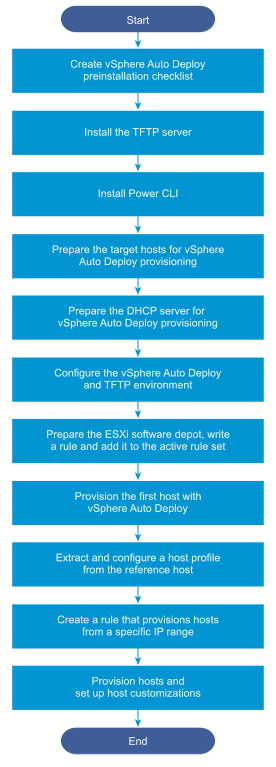In this scenario, you are going to set up and configure a working vSphere Auto Deploy environment that includes four hosts. You will create rules and provision two of the hosts with an image profile and the other two with the same image profile and a host profile that is set up to prompt for user input.
This scenario can provide you with the basis for a production environment. The task descriptions assume that you are using a flat network with no VLAN tagging between the physical hosts and the rest of your environment.
- Experience with vSphere (vCenter Server and ESXi).
- Basic knowledge of Microsoft PowerShell and PowerCLI.
- Administrator rights to a Windows system and a vCenter Server system.
Follow the tasks in the order presented in this scenario. Some steps can be performed in a different order, but the order used here limits repeated manipulation of some components.

vSphere Auto Deploy takes advantage of the iPXE infrastructure and PXE booting with legacy BIOS firmware is possible only over IPv4. If the hosts that you want to provision with vSphere Auto Deploy are with legacy BIOS, the vSphere Auto Deploy server must have an IPv4 address. PXE booting with UEFI firmware is possible with either IPv4 or IPv6.